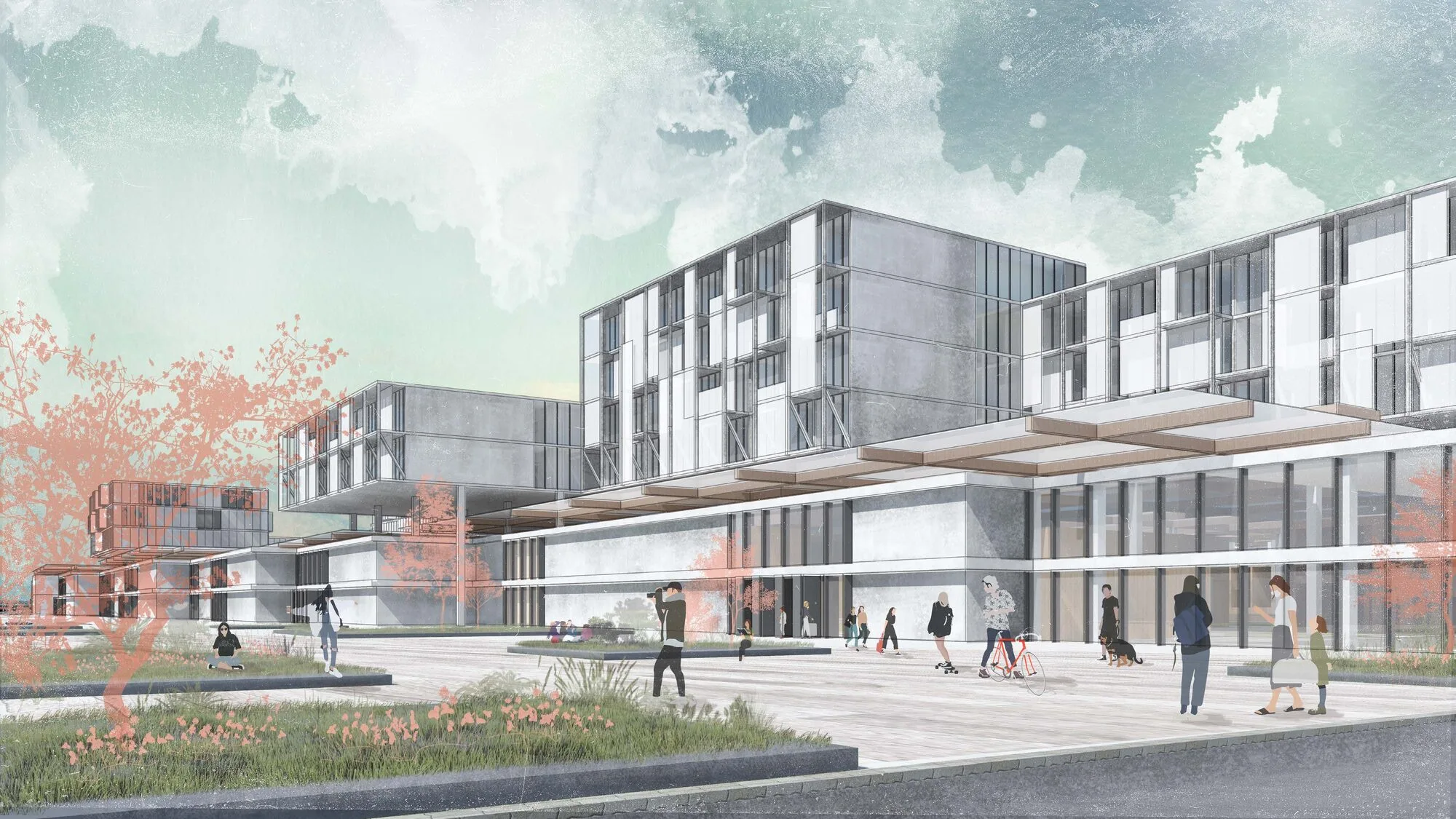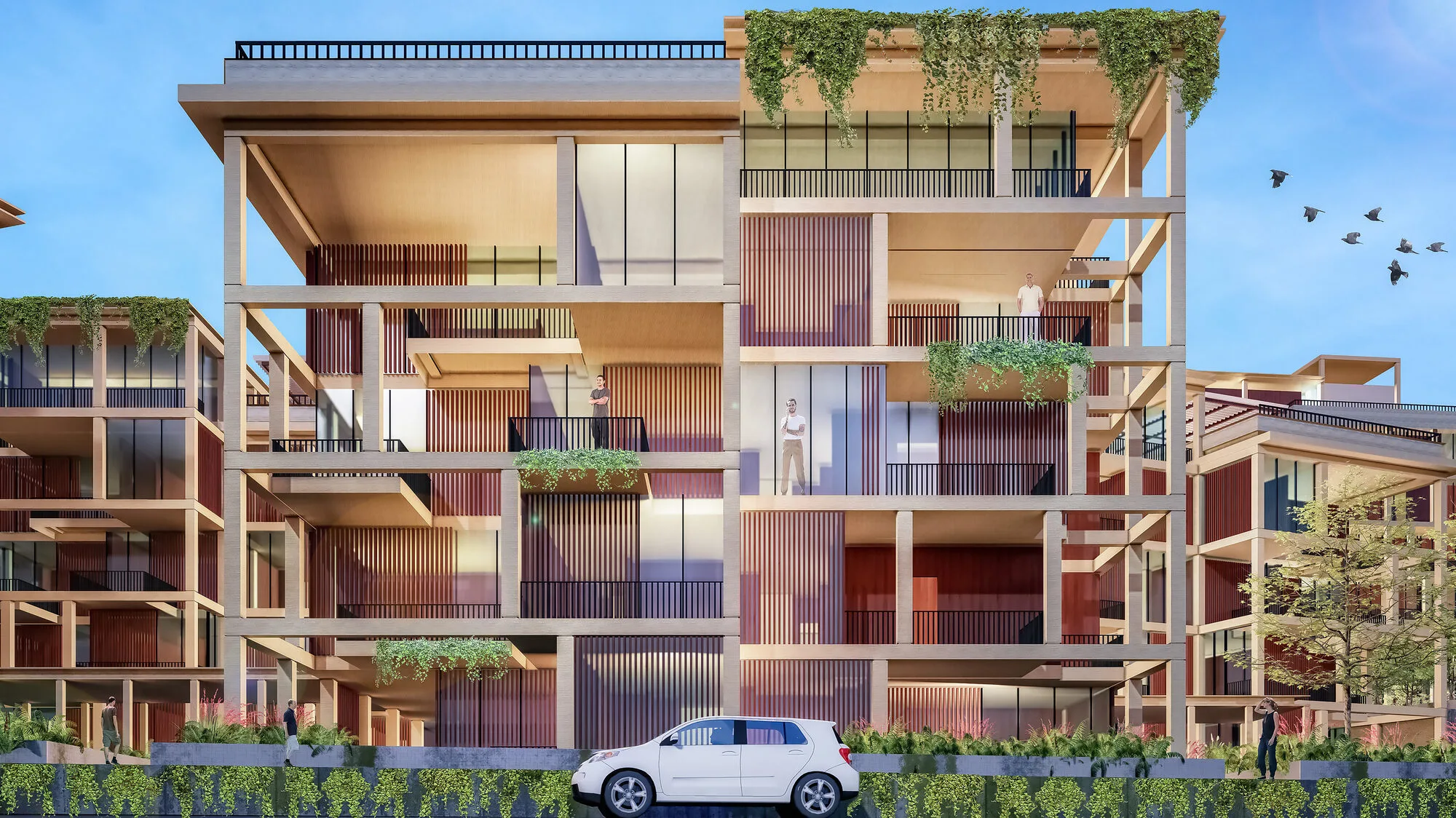
Mersin Tisan Summer Residence Campus
Mersin Residence
With its intriguing nature and archaeological wealth, Tisan is one of the hidden gems of the Mediterranean...
The Summer Residence Project is situated in the southeastern part of Silifke's Yeşilovacık neighborhood, where the Tisan Peninsula merges with the mainland. The residential complex, which offers a delightful and green walking route to nearby historical and natural beauties, is easily accessible via various transportation networks. Located 10 km (18 minutes by car) from the Mersin-Antalya Highway, the project site is a 3-hour drive from Gazipaşa-Alanya Airport. Taşucu Port, 35 minutes by car from the site, offers daily ferry connections to Cyprus.
Mersin Tisan Summer Residence Campus
The Mediterranean summer season begins in spring. While the rest of the country is still in early spring, the southern regions, like Mersin and Adana, eagerly embrace the sea. The Tisan Peninsula, primarily a popular destination for residents of Mersin and Adana, has gained attention for its unique coves. Tisan Cove, along with Barbaros Cove, Boğsak Cove, and Dana Island, is featured in boat tours from Taşucu Port.
Secondary residences are built in areas of high physical attraction (riverbanks, lakes, thermal springs, coastlines, etc.), typically in natural and tourism-rich regions. These properties are purchased or rented for recreational purposes during specific seasons. Secondary residences were historically a privilege of the wealthy and aristocrats, but today, they are a widely used tradition. They provide a retreat for those seeking to escape the city, relax, and recharge. The selection of these residences is influenced by geographical factors such as water sources, terrain, views, and climate.
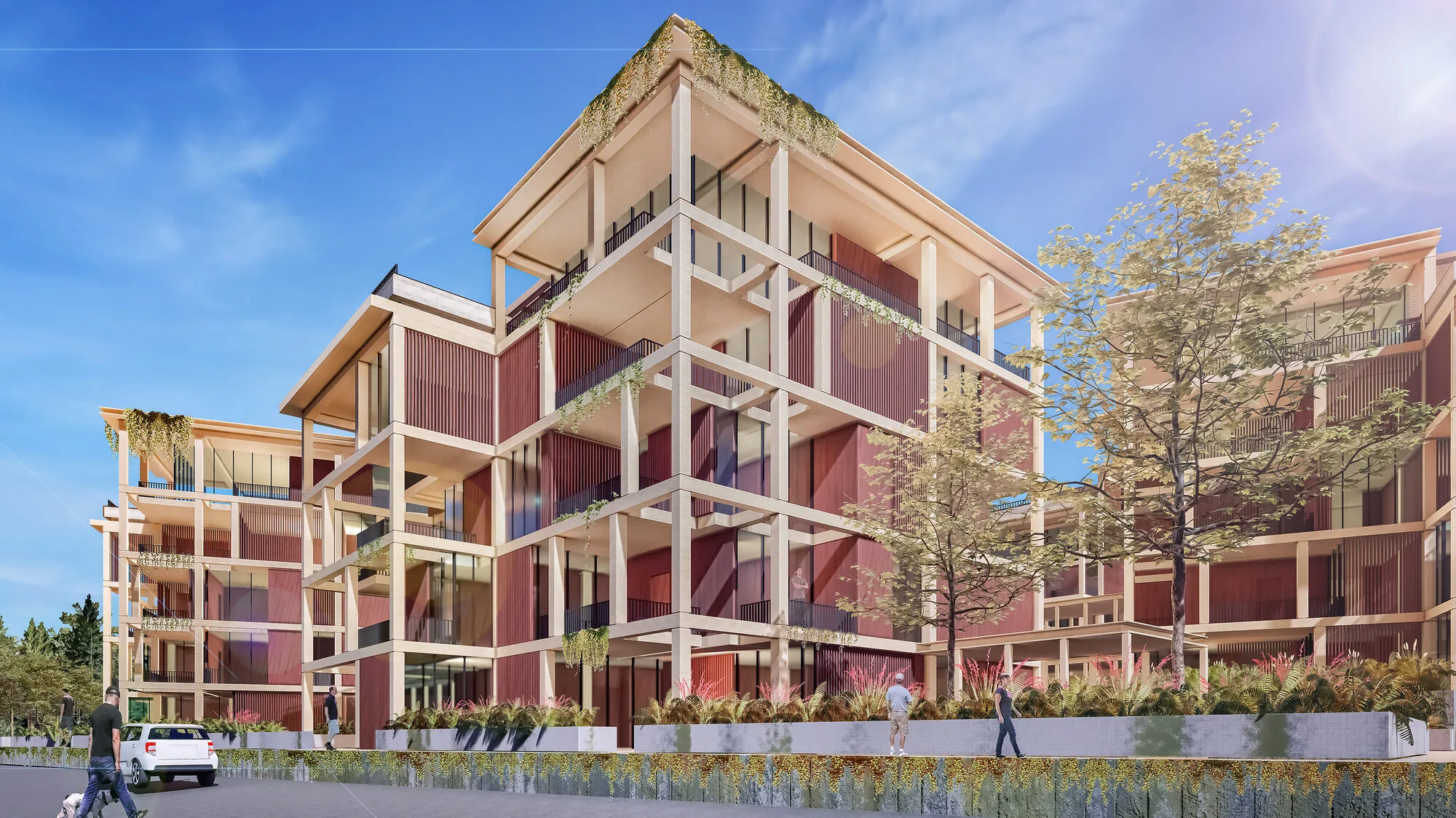
Archaeology
The lush vegetation and turquoise waters of the region likely looked just as beautiful thousands of years ago. Perhaps this is why the Tisan Peninsula and its surroundings have been inhabited since the 7th century BC. The area, now called Tisan but known locally as Ovacık Peninsula, is known archaeologically as Kilikya Afrodisias. The ancient city, named after the Greek colony devoted to the goddess Aphrodite, is part of a historical region influenced by various empires, including the Achaemenids, Macedonian Kingdom, Ptolemaic Kingdom, Seleucid Empire, Roman, and Byzantine rule. The most significant artifact from this city is the St. Pantaleon Church, dating back to the 4th century BC, which visitors can still explore today.


A Harmonious Life with the Surroundings
Surrounded by ancient and natural beauties, the summer residence complex offers a unique lifestyle for its residents and visitors. Whether tranquil or active, the complex accommodates different lifestyles, catering to the needs of all age groups. Green spaces, children's play areas, pools, indoor and outdoor sports facilities, a Turkish bath, Finnish sauna, spa, yoga and meditation areas contribute to the serene atmosphere.
The apartments are designed in various configurations, including 1+1, 2+1, single-story, or duplex options. The ground-floor units feature private gardens, while the middle-floor units are designed with terraced balconies. The top floor units are equipped with shared rooftop terraces, offering panoramic views, separated by walls that provide privacy while maintaining sightlines to the surrounding vistas.
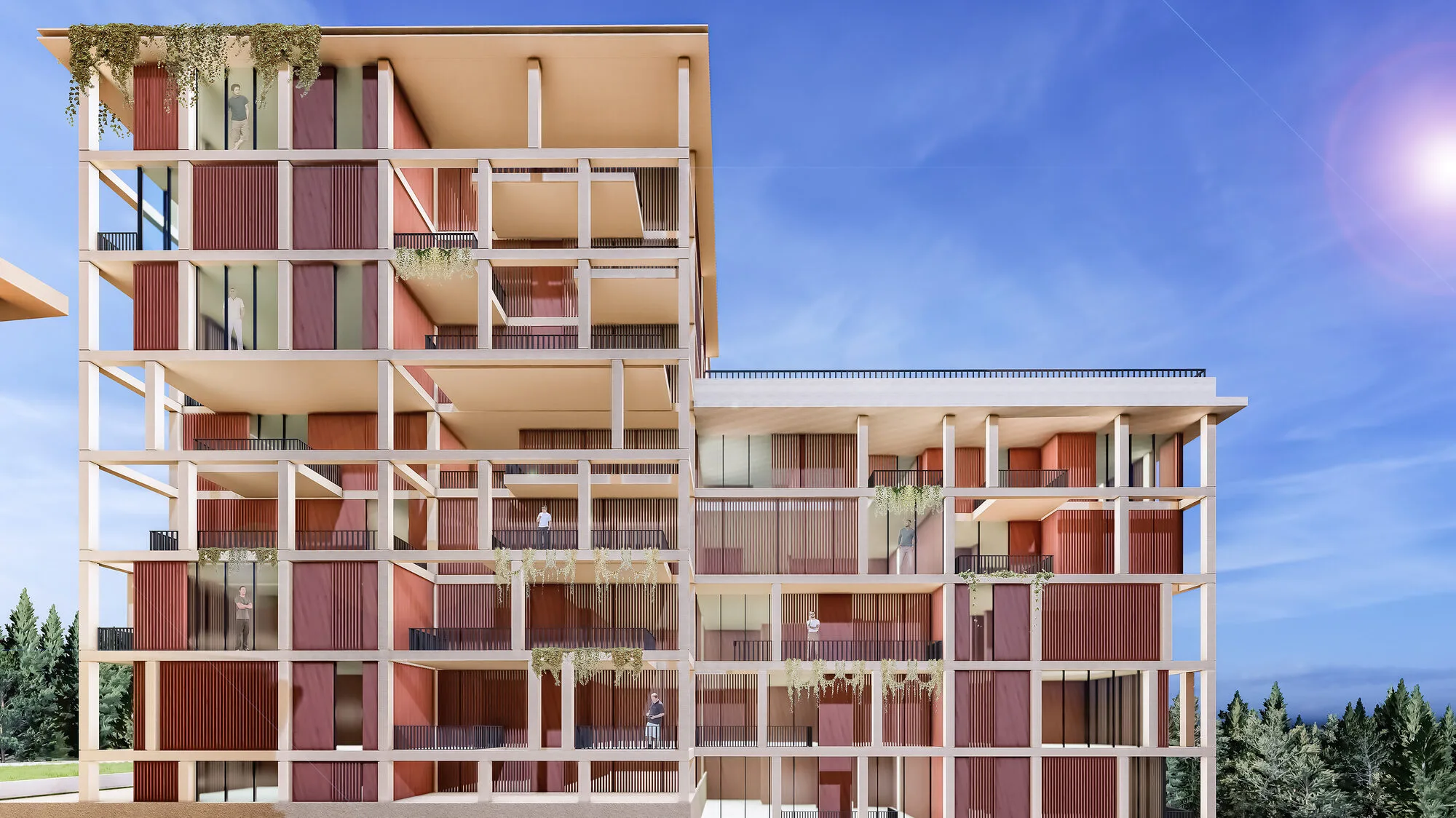
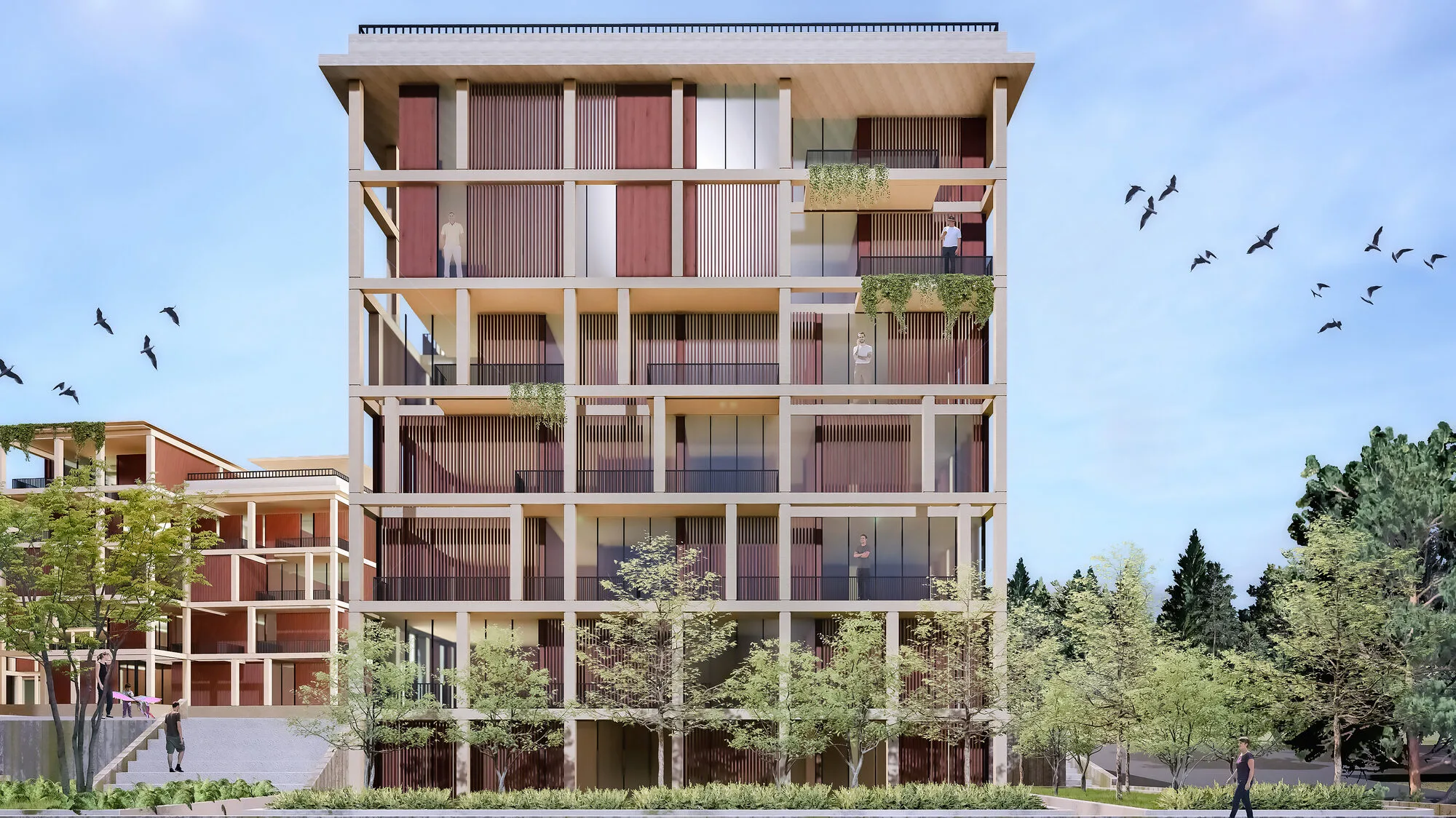
Inspiration from Ancient Settlements
The transition from the Classical to the Hellenistic period in architecture is marked by the increased presence of open-air activity spaces and the development of stoa buildings. In the Hellenistic era, Corinthian columns became a central feature in these structures.
The stoa, in ancient Greek architecture, refers to a covered colonnade or gallery, often situated beside a street or an agora. It is not only a public passageway but also a symbol of Stoicism, a philosophy founded by Zeno of Citium. Stoicism teaches acceptance of nature and the world as it is.
The stoa concept finds new life in the summer residence project through the corridors that connect the blocks, allowing for shaded and breezy passageways that reflect the need for shelter from the heat.
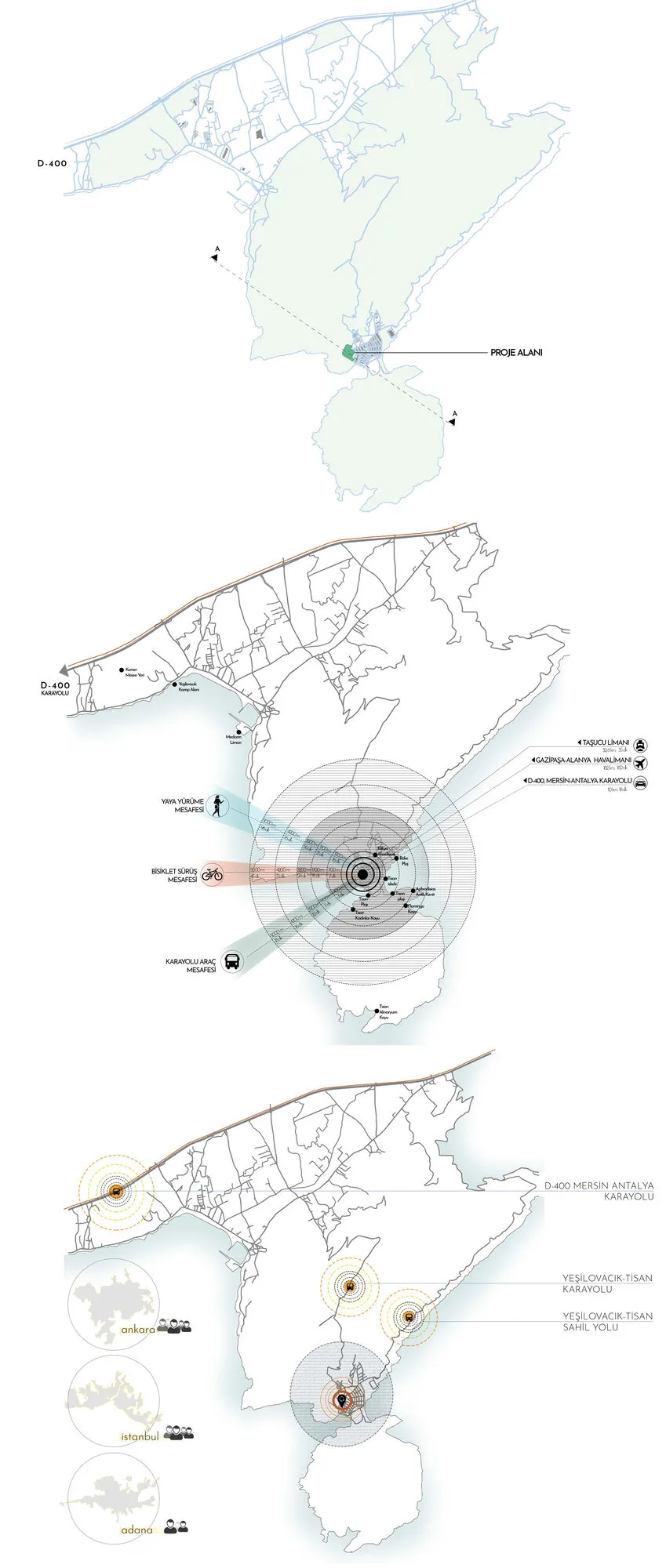
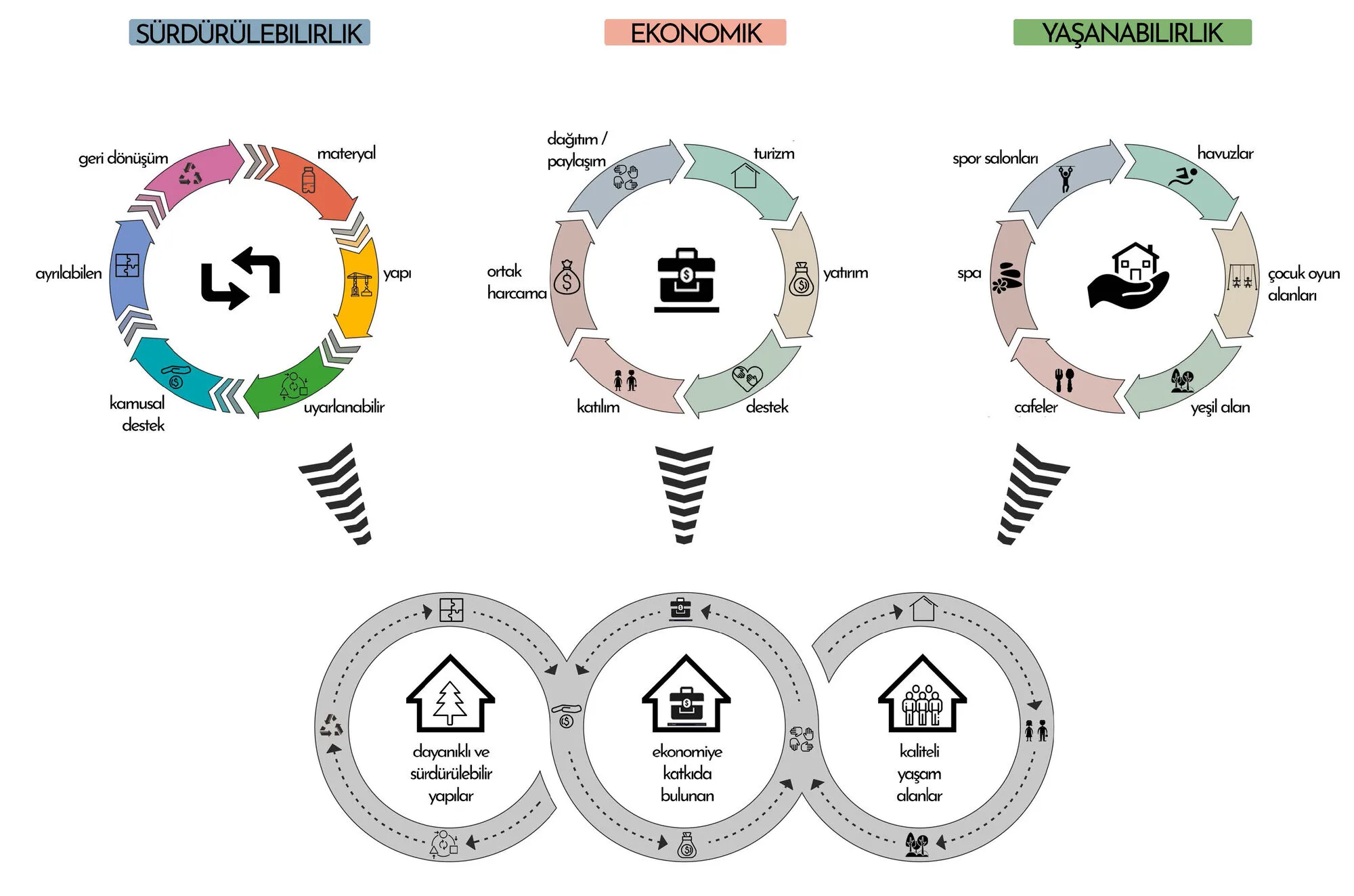
Summer Residence: Tradition or Necessity?
Secondary residences, often used seasonally, are spread out across the coastal regions. This is exemplified in the growing popularity of the coastal areas between Mersin and Silifke. As the city expands and becomes more crowded, more distant, pristine coves are being preferred for seasonal retreats. The coastal regions, like Narlıkuyu and Kızkalesi, were once the go-to summer spots, but in recent years, more secluded locations like those near Tisan have gained popularity.
The choice of secondary homes is influenced by factors such as proximity to water sources, greenery, views, climate, and transportation. The modern rise in secondary homes correlates with the increasing desire to escape the intense pace of urban life, with many retirees seeking to spend their leisure time in tranquil seaside or mountain homes.
The Rhythm of the Surrounding Area
The nearby summer sites are oriented around two main axes. Benefiting from the Tisan Peninsula’s advantageous location, which offers stunning views of both the south-facing Tisan Cove and the north-facing lush green vistas, the residential complex is situated on a sloped terrain. The buildings are designed to maximize these views while integrating harmoniously with the land’s contours. The patterns between the blocks ensure that no one’s view or access to sunlight is blocked.



Opportunities and Threats of the Project Site
Located on a steep slope with stunning views of Tisan Cove and Peninsula, the project site capitalizes on the topography and landscape. The highest and lowest points of the site differ by approximately 23 meters, creating the perfect opportunity for each unit to have unobstructed access to views, sunlight, and ventilation.
With the land divided into two parcels and the main access road extended, transportation and accessibility issues have been carefully addressed. The upper parcel, benefiting from the slope, is designed to accommodate a parking area in the basement, ensuring sufficient parking spaces for the development.
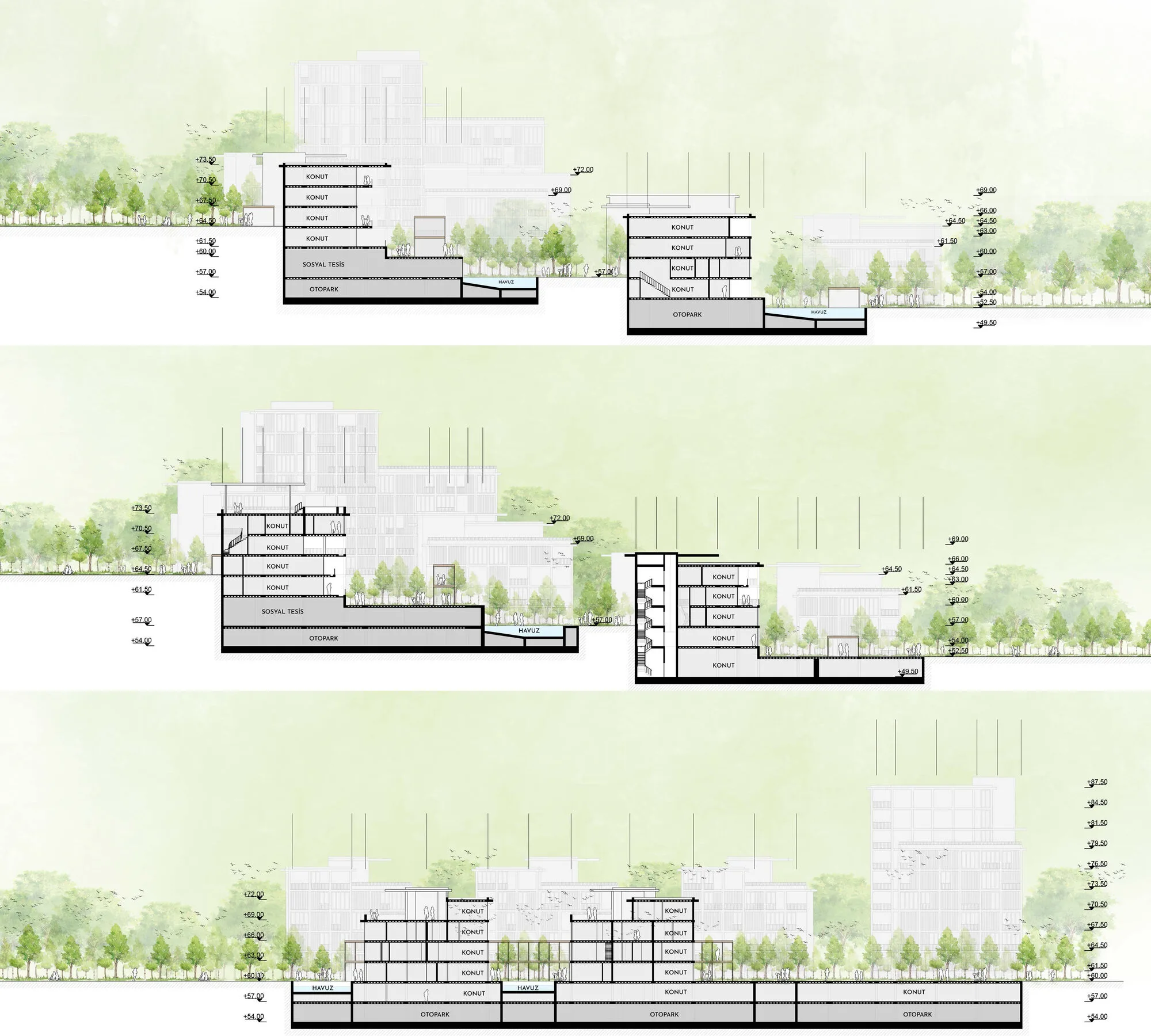
Apartment Features and Diversity
The blocks are varied in size and symmetry. Smaller blocks are dedicated to 1+1 apartments, while larger ones offer both 1+1 and 2+1 configurations. The layout includes a total of 33 distinct apartment types, ranging from ground-floor to terrace-level units. This variety allows for the flexibility and comfort sought by users.
Development Approach: Unified vs. Fragmented
The challenges of dense urban living often lead to a desire for individuality and privacy. In this summer residence project, the approach of fragmented blocks supports privacy and separation from neighboring units. The blocks maintain a balanced distance from one another, fostering both a sense of seclusion and connection to the surrounding natural environment.
Fragmented Terrace Design
The dynamic facades of the blocks feature terraces in varying positions, creating an organic rhythm across the site.


